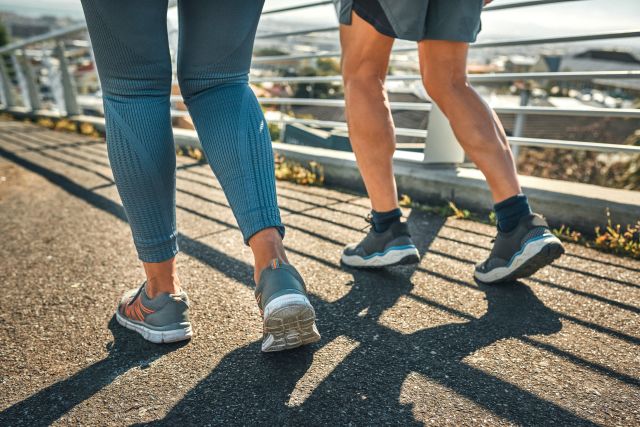Updated on November 14, 2023.
For many people, physical activity—low-impact workouts, in particular—can be one of the most effective ways of treating osteoarthritis of the knee. Not only can exercise help reduce pain, but it can boost mobility and make injuries less likely. It’s a win-win-win.
However, not just any exercise will do. You need to make sure you’re doing joint-friendly activities. Luckily, one of the very best exercises—walking—is also one of the easiest to start.
Gain strength through walking
If you’re one of the 528 million people around the world living with osteoarthritis, you may already know how the pain, stiffness, and swelling associated with the condition can limit your ability to move. The problem is that when you move less, your muscles deteriorate. And if your knees and thigh muscles become weak from disuse, you’ll be at a higher risk of disability.
This is where low-impact exercises like walking can help. When you work to build up affected muscles, your ability to perform daily activities can improve, along with your pain and quality of life.
Walking is well-suited for people with knee arthritis since it increases the strength and flexibility of muscles around the knee. It can also help ward off weight gain, which can affect joints. Plus, you already know how to do it, you can do it virtually anywhere, and besides a good pair of sneakers, it’s practically free.
Short- and long-term pain relief
It’s important to understand that when you start a new exercise program or increase the amount you’re already exercising, you may experience swelling, stiffness, or pain. It can take as long as two months for your joints to adjust and adapt. But if you stick with your routine, your pain may lessen in the long term.
What’s more, research suggests that this regular, moderate walking won’t increase the risk of knee replacement. In fact, one five-year study, published in 2021 in Archives of Physical Medicine and Rehabilitation, found that people with advanced knee arthritis who replaced daily light walking with moderate walking reduced the risk of needing a knee replacement by more than 35 percent.
Researchers aren’t entirely sure why consistent, habitual walking is so effective for easing knee arthritis pain. In addition to stronger muscles and better weight control, it’s perhaps a combination of changes to the nervous system and the brain’s perception of pain.
How much walking is enough?
There is no widely accepted, recommended number of steps for people with knee arthritis. One study published in 2014 in the journal Arthritis Care & Research suggested that 6,000 steps each day of walking was effective, helping people reduce pain and remain active. Though this research hasn’t been repeated, the Arthritis Foundation still cites 6,000 as a reasonable daily step goal.
But walking goals can differ from person to person, depending on factors like age, lifestyle, and overall health. That’s why it’s vital to customize your exercise routine for your individual situation. In fact, in a 2023 review published in Osteoarthritis Cartilage, researchers emphasized that people with knee arthritis should work with a healthcare provider (HCP) to create a comprehensive, personalized treatment plan. This should include daily walking and other exercises, alongside goal-setting and continuing education about the role exercise plays in arthritis.
Most important is making sure each day has some physical activity. The CDC recommends 150 minutes of moderate exercise each week, but don’t give up if that target initially seems out of reach. Each minute you’re active makes a difference for your health. A wise strategy is starting small and slow and adding on more activity as you become increasingly fit.
Other arthritis-friendly exercises
In addition to walking, there are other low-impact aerobic (cardio) exercises that may be ideal for people with knee arthritis. These include cycling, swimming, dancing, gardening, and water aerobics. For a more balanced workout, make sure to combine cardio with other types of fitness, such as:
- Muscle-strengthening: weightlifting, yoga, resistance bands
- Balance: tai chi, walking backwards, standing on one foot
- Flexibility: yoga, stretching
Always speak with an HCP before beginning any new exercise regimen if you have knee osteoarthritis. And remember: The sooner you begin, the sooner you may be able to feel better.






